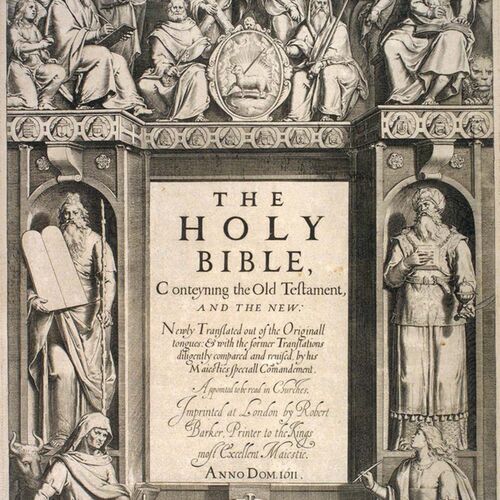Browse Exhibits (171 total)
Print Culture Final Project - Evelyn Spring 2024
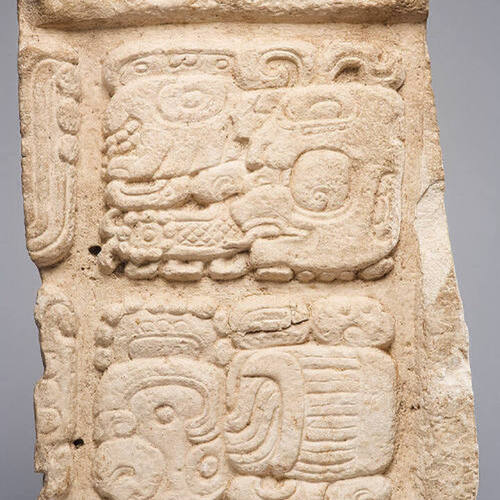
To give a short background of the development of writing systems before getting into my final project; the development of writing systems were a significant milestone in human history because it enabled people to record events, communicate across long distances, pass along traditions, and enabled the remembrance of a rulers command as well. Writing was originally thought to have more religious origins until the Enlightenment in the 18th century highlighted the fact that there may have been different explanations that what people thought. What is now believed is that writing evolved from more practical needs like accounting and record-keeping while societies were evolving (Robinson, 3). A popular theory as to where writing originated from and started suggests that writing grew out of a counting system using clay tokens. These tokens were found in a variety of Middle Eastern archaeological sites dating back to 8000-1500 BC. These evolved into two-dimensional symbols showing significant progress towards an actual writing system (Robinson, 4). Examples of this initial writing system includes Ice Age symbols which were found in caves, and while these arent fully “writing” they were picture descriptions which was a step towards writing today and represents an early attempt at symbolic representation.
To express the full range of human thought it requires a writing system that is linked with spoken language. According to Ferdinand de Saussure, "language may be compared to a sheet of paper: 'Thought is on one side of the sheet and sound on the reverse side'" (Robinson, 5). Early writing systems like pictograms were meant to convey concepts through the connection to an object or objects. Although this is an early form of communication it has still translated over to today’s writing systems used to convey warnings or hazards. Additionally, pictograms are a somewhat “universal” language as someone from almost any culture can depict what it is trying to say.
In this exhibit I will be focusing on the evolution of writing systems and print culture in the Indigenous Americas while using 3 different time periods as evidence of this evolution. I will use sources from the premodern, early modern, and modern eras highlighting writing and print with Mayan Hieroglyphics, original newspaper printing, and modernized printing.
Book Culture and History - Pachinko Haneen Alrabadi
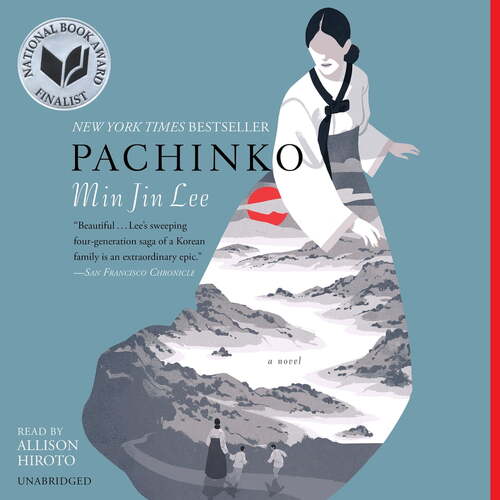
I studied the premodern, early modern, and contemporary development of writing, bookmaking, and print culture in Asia, using "The Tale of Genji," "Jikji," and "Pachinko" as primary examples. By highlighting the ways in which printing technology and publishing practices have impacted intellectual, social, and cultural development, this study aims to show how resilient the publishing industry has been to political upheavals, censorship, and technological developments.
Africa's Book Culture and Print History - Sarah Floyd
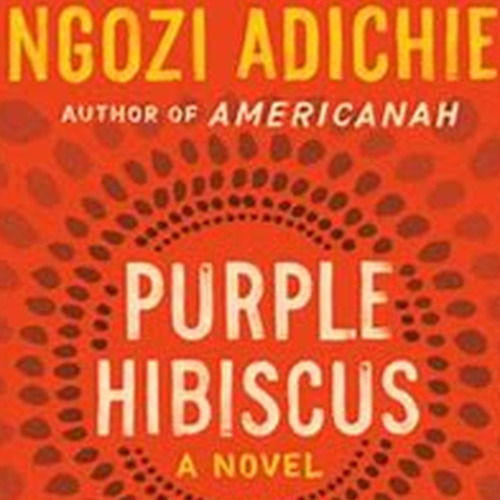
The exhibit analyzes three literary texts written in different periods in Africa. The goal is to learn about the history of print culture, bookmaking, and “writing.” The author will also explain how they were produced and circulated. The author focuses on the pre-modern period (The Book of the Dead: The Papyrus of Ani,) the early modern period (The Interesting Narrative of the Life of Olaudah Equiano, Or Gustavus Vassa,) and the modern (Purple Hibiscus.) The exhibit also provides a summary of each literary work and explains its significance.
Please click on each sidebar tab to learn more.
Native American Works of Literature Across Different Printing Eras

By: Victory Chika-Okafor
INTRODUCTION
This will delve into the production and circulation of Native American literature, spanning from the pre-modern era to the contemporary period. This project will be focusing on the tangible mediums of communication, therefore oral traditions and electronic texts, are not included.
Each of the three different eras will have a specific subject (cultural item/text) that will be used as a basis for the time period's analysis. The subjects are; Wampum belts, specifically the Two Row Wampum (pre-modern era), "A Sermon Preached at the Execution of Moses Paul, an Indian" by Samson Occom (early printing press), and There, There by Tommy Orange (modern printing era). By examining the production and circulation of these chosen texts/cultural items from these distinct epochs, we can gain insights into the cultural, technological, and social developments that have shaped Native American literature and helped create a sense of unity and transcultural appreciation across different ethnic groups.
In the pre-modern era, before the advent of the printing press, indigenous storytelling was woven into the fabric of daily life, often preserved through oral traditions and physical artifacts such as wampum belts.
Next is the early modern period. The introduction of the printing press revolutionized the dissemination of knowledge and literature. This era witnessed the birth of Native American literature in print, with works by figures like Samson Occom breaking new ground. The production of books facilitated a broader transcultural engagement.
Fast forward to the modern era, the printing of Tommy Orange's There, There that involves the use of more efficient, mass producing processes than ever before.
Through analysis of these three periods, this project will also explore the similarities and/ or connections in Native American print culture across these eras.
(Viewer Guidance: You will find tabs at the side if you're using a computer, or below if you're using a phone, labelled with the different time periods. The pages are arranged in order of time, and since connections are made between them it's best to follow pages in the chronological order it is in).
The Evolution of African Print Culture and Bookmaking
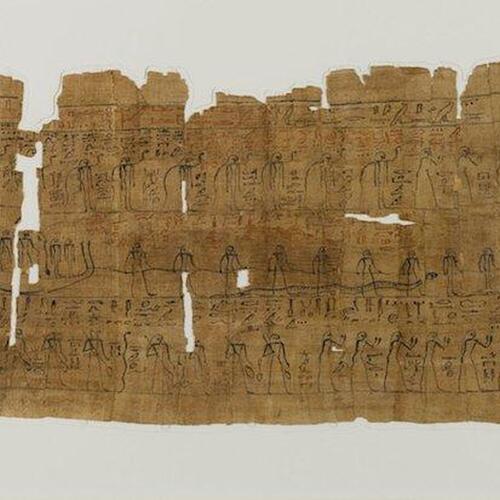
This project aims to explore the history of print culture, bookmaking, and writing within African traditions by examining three significant works from different periods: The Book of Coming Forth by Day (commonly known as the Book of the Dead), Olaudah Equiano's narrative, The Interesting Narrative of the Life of Olaudah Equiano, and Chinua Achebe's Things Fall Apart. Through this examination, we will trace the evolution of writing and printing techniques, the dissemination of texts, and their cultural significance across premodern, early modern, and contemporary periods.
This project has been created for the Cultures and Ideas class (12H) during the Spring Quarter of 2024 as a final project. Its purpose is to provide a comprehensive understanding of how African literary works were produced, circulated, and received across different historical periods.
To navigate this project, start with the individual pages dedicated to each text to understand their creation, significance, and dissemination in their respective periods. Then, explore the pages on the premodern, early modern, and modern periods of print culture for a broader historical context. Finally, visit the comparison page to see the similarities and differences across these periods and texts, highlighting the evolution of African print culture.
Book History & Print Culture in Korea
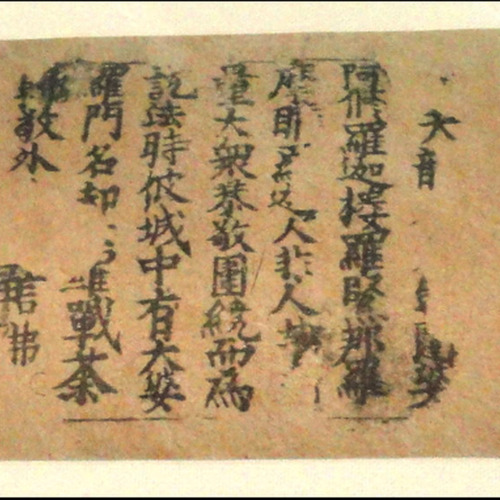
Introduction
This project will cover book history and print culture, and will focus on three texts that are from or written about Korea. The three texts are from different time periods and were made using corresponding historical printing technologies.
The first and oldest text is the Pure Light Dharani Sutra. Printed around the year 712, the Dharani Sutra was moved from China to Korea, and stored in the Bulguksa temple. It was made using woodblock printing.
The second text this project will explore is Jikji, a book of Buddhist teachings that was printed in Korea in 1377. Jikji was printed using movable metal type, and it is the oldest movable metal type printed book.
The most recent book is the historical fictional novel Pachinko, written by Min Jin Lee. The novel follows a Korean family living in Japan, and it was published in 2017 in the United States. It was printed using the modern day, digital age practice of offset printing.
For each book, I will discuss the history and technology involved in the printing process used in the making of the book, and its context and significance.
To begin reading this digital project, please proceed to the next page, titled The Pure Light Dharani Sutra, using the list of pages on the left hand side of the screen. Please proceed through all of the pages in the order provided in the list of pages, ending at the Works Cited. On each page, click on the images to see more details on the photos.
Book History and Print Culture in Asia Throughout Time

Since the beginning of time, we, as humans, have set ourselves apart from other species through our use of language. Language is a necessary aspect of our lives that allows us to connect to others, and it has countless uses in our society. We have a strong desire to record and pass on knowledge and information, allowing writing to be created, developed, and evolved. It has transitioned from being a skill held by very few, often restricted to people of status or wealth, to being widely practiced by 85% of the world's population (Fischer 7).
Language has undergone a complete metamorphosis since its inception, although identifying the exact origin of writing remains a challenge. Only small remnants of ancient versions of writings can be found, which are now illegible to modern eyes. Additionally, Latin, a language often considered 'dead,' continues to underpin numerous modern languages, a testament to its enduring importance despite its limited contemporary use.
Preserving our languages in the physical form that is writing has been done in countless ways, with the passage of time and progression allowing for only the best, most efficient versions to be kept in use. These adaptions are constantly occuring as our society shifts its needs and new methods continue to arise (Fischer 8).
Overall, writing is an essential aspect of our lives, and the transition from a series of scratches, dots, and scribbles to what we consider to be writing today is fascinating. None of this transition occurred naturally; it all happens with intent as we continue to better ourselves and our civilizations.
In this project, I will dive into various writing methods, the spread of literature, and the cultures associated with them in Asia throughout three different periods. I will assess the Kojiki and the Nihon Shoki from the premodern period, The Tales of Ise from the early modern period, and Pachinko from our current, modern period.
Mermaids of Jeju Island
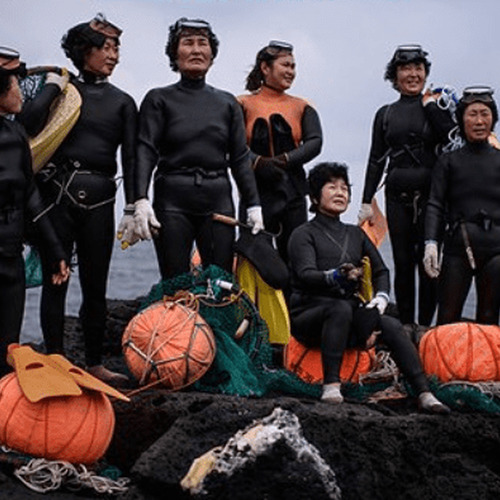
The Haenyeo of Jeju Island are not only skilled divers but also custodians of a rich cultural heritage that embodies resilience, community, and the profound relationship between humans and the sea.
Find out more about them in this exhibit by clicking on the tabs on the right.
Domestic Violence and Generational Trauma
Introduction to the There There Exhibit
How can violence impact generations upon generations of people? Also, how does Tommy Orange narrow down the umbrella issue of violence to show its various effects on Native American communities? In Tommy Orange's novel There There, the author details how traumatic incidents of violence have affected the twelve characters of the story. Furthermore, the author details how different sub-categories of violence intersect with each character's experiences. One type of violence that Orange focuses his novel on is domestic violence especially when talking about Jacquie Red Feather and Blue. In mentioning their experiences of how domestic violence is silenced and incomplete, we can begin to see the impacts that violence has upon generations of people.
Especially with the effects of colonialism on Indigenous communities around the Bay Area, where the book is set, the pressures to assimilate on top of processing a multitude of violent experiences becomes essential to look into. In Tommy Orange's novel There There, the incorporation of Jacquie and Blue's experiences of domestic violence as a means to show this idea of generational trauma, not only emphasizes the idea of the single story but also represents the pressure that is put on American Indians, forcing them to assimilate and feel that their voices and sense of belonging at a place that they used to be able to call home are ultimately limited.
Advice for Navigating this Exhibit:
To navigate this exhibit, click on the waypoints on the right side of the page. The first one that you should click on should be "What is Domestic Violence?" After that, continue down in the listed order that the waypoints go in. However, feel free to jump back and forth between pages at your leisure.
